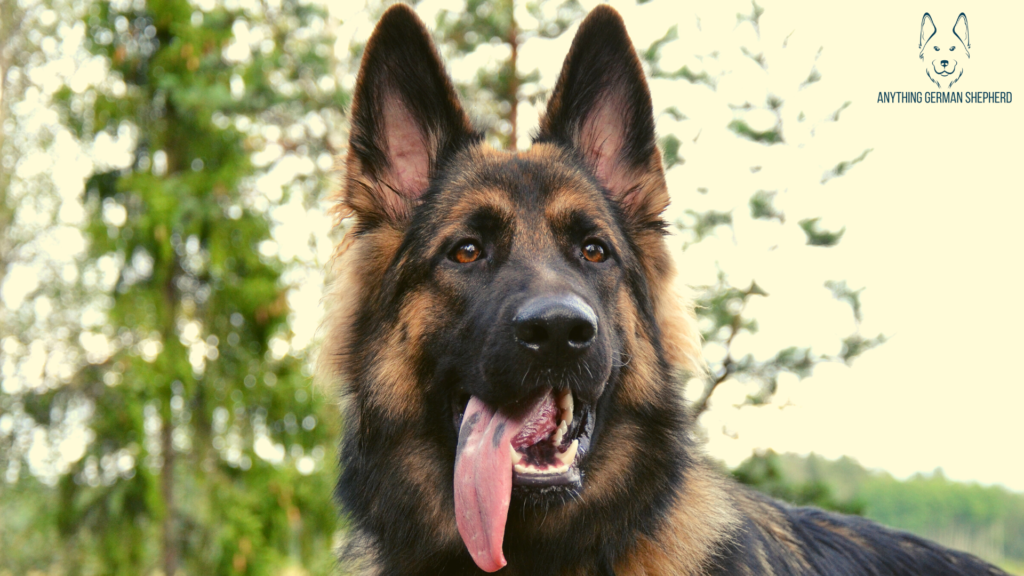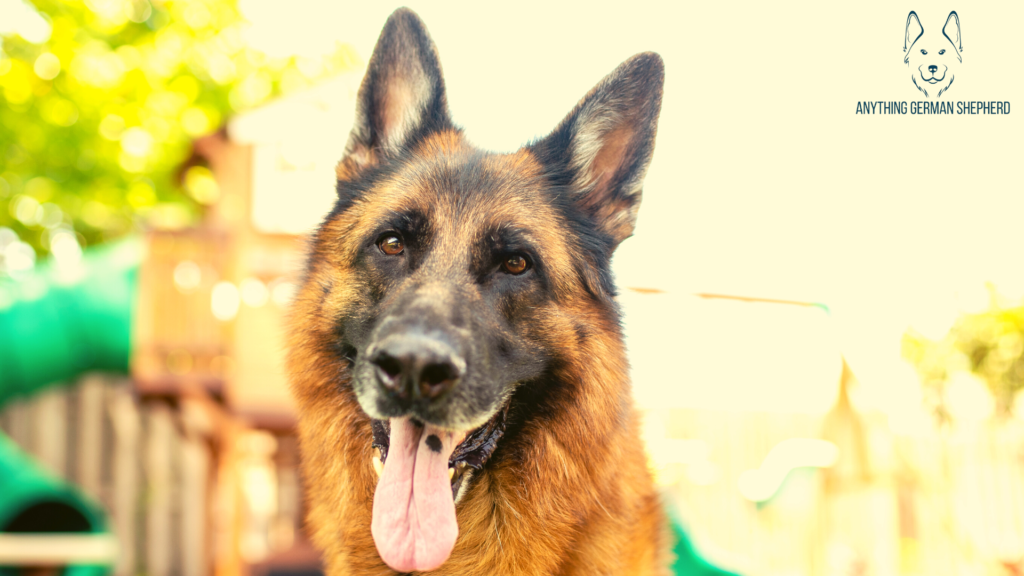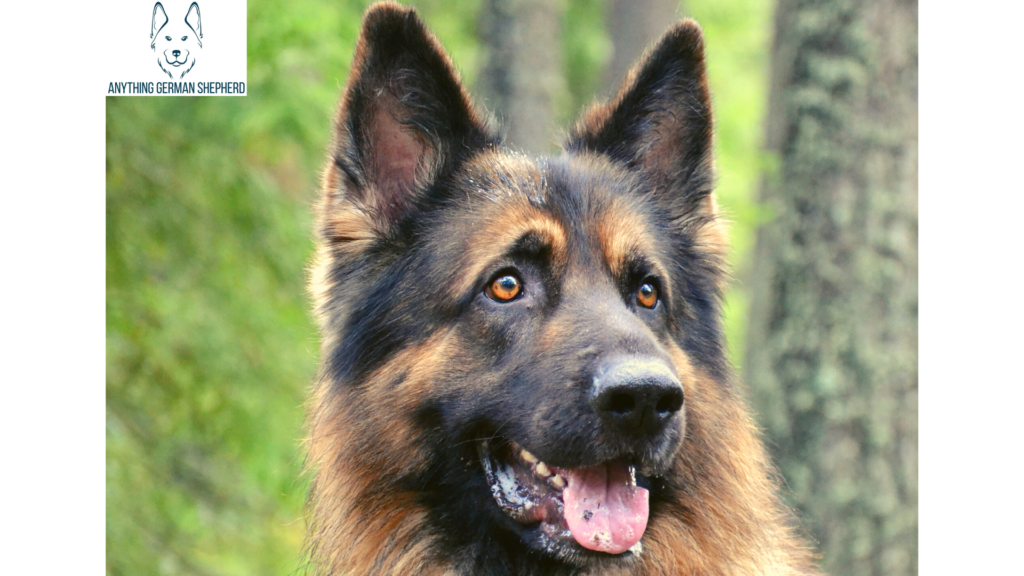Why Do German Shepherds Have a Black Spot on Their Tongue: What This Black Mark Really Means
All kinds of theories exist for why the German Shepherd often exhibits one or more black spots on their tongue.
Some of these theories are quite outrageous. Others can be worry-making. Still, others simply have no basis in reality.
But sorting through the theories to find out what you need to know now is a tough task, especially when you are new to German Shepherd care and you are anxious to find out the truth.
In this article, we share the facts behind why so many German Shepherd dogs have a black spot on their tongues, what it means and what you need to know right now to take good care of your precious pup.

German Shepherds Come in Many Colors
One thing many first-time German Shepherd owners do not realize is that the “traditional” bi-colored black and tan German Shepherd color is not the only color these dogs can be bred for.
In fact, as the official American Kennel Club (AKC) dog breed standard explains, German Shepherds can be black and red, black and cream, black and tan, black and silver, sable, liver, blue, white and gray.
While there is nothing in the breed standard that specifically explains what the GSD tongue should look like, suffice it to say there can be every bit as much visual variation there as elsewhere in this dog breed.
Is Your German Shepherd Mixed With Chow-Chow?
As this German Shepherd dog owner forum thread (and many others like it) clearly explains, it is high time this unfounded rumor is put to rest.
It likely got started in the first place because the Chow-Chow breed is quite well known for its signature blue-black tongue color.
The color is caused by a pigment common to all canines called melanin that is responsible for the basic black color.

But this has nothing to do with why a German Shepherd may have one or more black spots on their tongue in adulthood.
As German Shepherd Rescue Elite charity explains, the German Shepherd dog breed history and development are very well documented.
At no point after German cavalry captain, Max von Stephanitz begin developing the German Shepherd from a dog/wolf cross did the Chow-Chow breed enter the mix.
In fact, von Stephanitz recorded no less than four wolf crosses to arrive at the modern GSD!
And while today there is a hybrid dog breed called the Chow Shepherd, this is a much more recent development that has arisen due to the current craze for hybrid dog breeds.
Do All German Shepherd Dogs Have a Black Spot on Their Tongue?
The simplest answer to this question is no.
If a German Shepherd does have a black spot on their tongue, this doesn’t tell you anything specific about the breed as a whole.
But if all GSDs don’t have this black spot pattern, then does it mean there is something wrong with the dogs that do?
Or is something missing from the GSDs that don’t?
This YouTube video showcases a great example of a German Shepherd with a black spot on their tongue.
The fact that this is also a Black German Shepherd is just a coincidence!
What Causes Black Spots on a German Shepherd Dog’s Tongue?
Remember earlier here when we talked about the Chow-Chow dog breed and we mentioned the pigment melanin?
As Dog Genetics points out, all dogs have two different types of pigment in their DNA: eumelanin and phaeomelanin.
Phaeomelanin produces the basic red pigment. We won’t talk more about this pigment and how it works in this article.
Eumelanin, or melanin as it is sometimes called, produces the basic black pigment color.
Eumelanin can be altered by interactions with other genes that can lighten it to gray, blue, liver, or isabella (blue-grey).
Unlike phaeomelanin, which controls only for coat color, eumelanin can also influence eye color, nose color, skin color, and – you guessed it – even tongue color.
So when a German Shepherd dog has one or more black spots on their tongue, it is related to the production of melanin.
In this way, you can think of the black spot on your GSD’s tongue as similar to a freckle or birthmark on you.
When a German Shepherd has an all-pink tongue, this simply means that no eumelanin was triggered to produce on your dog’s tongue.
It is not a good or a bad thing – it simply is the way your dog came out.
As Homeward Bound Animal Rescue charity highlights, lots of different purebred dog breeds besides the Chow-Chow and the German Shepherd can have spotted tongues.

German Shepherd Dental Health Issues That May Affect the Tongue
As the American Kennel Club (AKC) helpfully explains, the simplest explanation for any dog breed that has black or dark spots on the tongue is most likely due to eumelanin pigmentation.
In fact, as the AKC points out, those spots are even likely to change over time and this is still considered normal in the world of canines.
Sometimes a puppy will be born with a single color tongue and then black spots will appear later on. This is normal too.
And of course, if you really want to know for sure if your GSD is purebred, you can always order a genetic test to verify.
But is there any time when black spots on your dog’s tongue may be more than just a pigment anomaly?
As in, should you be worried that perhaps your dog has a health problem that is causing the spots?
As Mercola Healthy Pets emphasizes, the tongue can be an important marker of your dog’s overall health…or lack thereof.
Because your GSD uses its tongue for so many important tasks in life, the tongue can develop health issues you need to be aware of.
Some of the main health issues that can affect a German Shepherd dog’s tongue include warts, tumors, inflammation, ulceration, infection, and cancer.

Tongue warts
Oral papillomatosis is the most common type of tongue warts seen in dogs. These warts look like miniature cauliflower under a magnifying glass.
While they are distressing to look at, typically the conditions resolve itself over time.
Tongue tumors
When tumors develop on a dog’s tongue, they are more likely to be malignant (cancerous). However, this is not always the case.
The exception is a cyst that commonly grows underneath the tongue called a ranula.
The cyst causes drastic swelling and discomfort but is not known to be cancerous.
Tongue inflammation
Since your dog regularly uses their tongue to explore the world, it just follows that your pup may occasionally mouth, eat, or lick something that causes inflammation or irritation.
Tongue inflammation may also be caused by toxic plants, toxic chemicals, bacteria or fungi, poor nutrition, or stomach issues.
Another type of tongue inflammation, glossitis, may be tied to other dental health issues such as gingivitis (gum tissue disease), stomatitis (mouth tissue inflammation), or cheilitis (lip tissue inflammation).
Tongue ulceration
Tongue ulceration is an injury to the tongue. Bug bites, punctures, cuts, scrapes, and burns can all give rise to tongue ulcerations as well.
Another common cause of tongue ulceration is when there is a more serious disease of the kidneys or canine cancer.
Tongue infection
Tongue infections may result from an invasion of a parasite, bacteria, virus, or fungi.
The oral condition papillomatosis mentioned here earlier is one common type of tongue infection.
Tongue cancer
Tongue cancer in canines is divided into these main groups: squamous cell cancer, melanoma, granular cancer, and mast cell cancer.
The earlier tongue cancer in German Shepherds is detected and treated, the better the chances for remission and recovery.
Tongue cyanosis
When your dog experiences a deficiency in oxygen in the blood for any reason, this can cause the tongue, gums, and skin to turn pale or blue.
This is a very serious and even life-threatening condition that should never be ignored. Cyanosis always requires immediate veterinary care.
This information can vary understandably provoke worry in you, the German Shepherd owner.
However, it is good to be aware of these types of known health issues GSDs can develop.
The main reason to know about these different types of health issues is so you can determine when the issue you are wondering about is totally normal and when you may need to bring your dog to see your veterinarian.
If all you are seeing is flat black circles or spots (one or many) on your German Shepherd’s tongue, chances are good that it is simply the eumelanin pigment causing it.
In this case, while you may want to have your canine veterinarian look at your dog’s tongue at your next “well pup” visit, there is really nothing to worry about.
And if you do ever see anything that worries you on your German Shepherd’s tongue, the sooner you can get it checked out, the better chance your dog will make a full recovery.






























